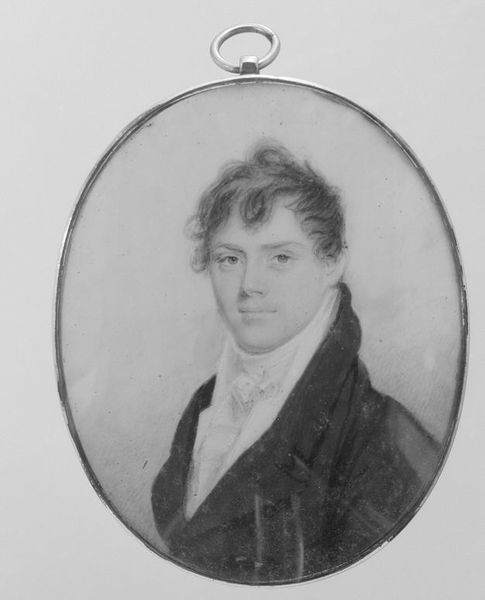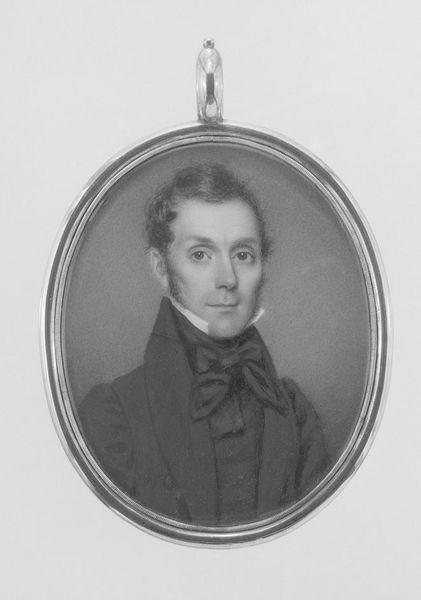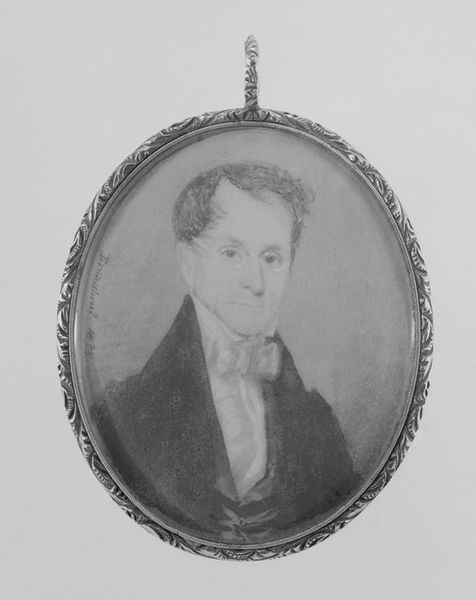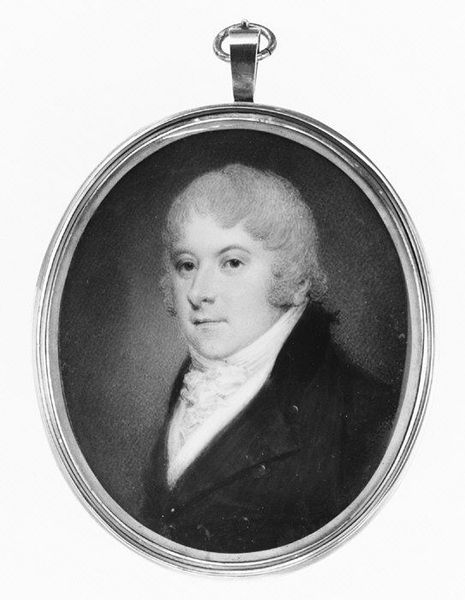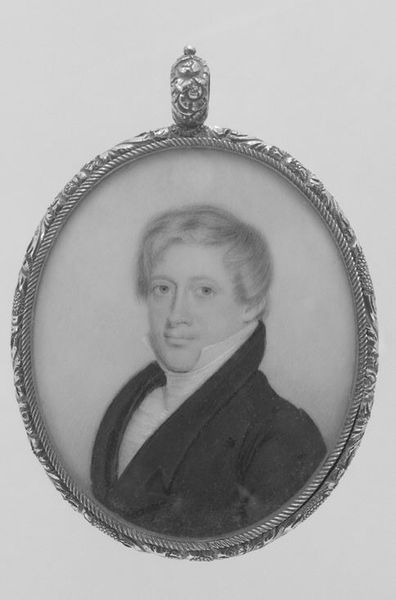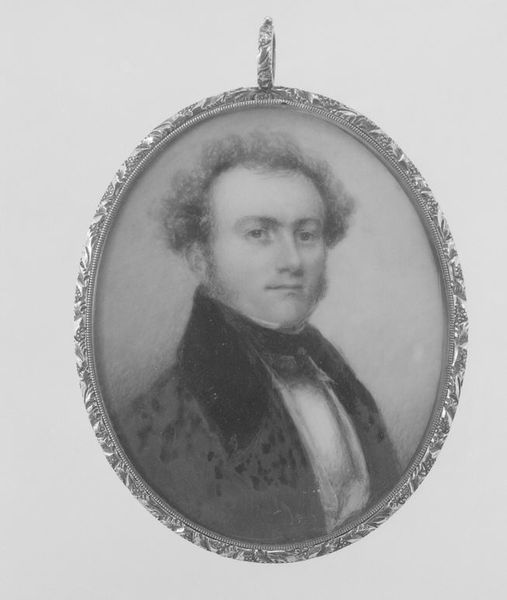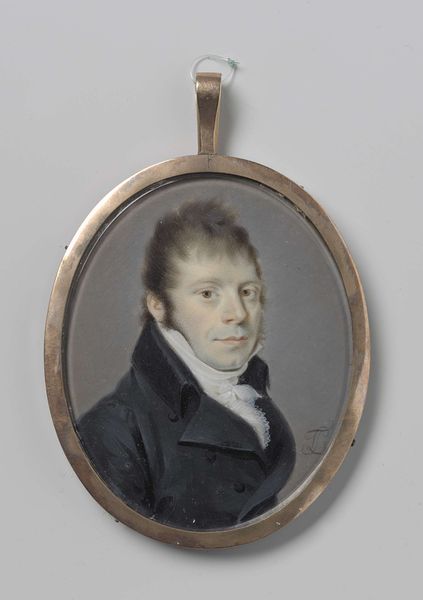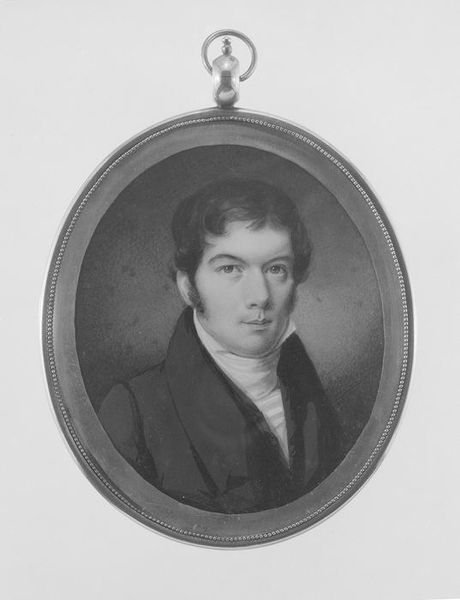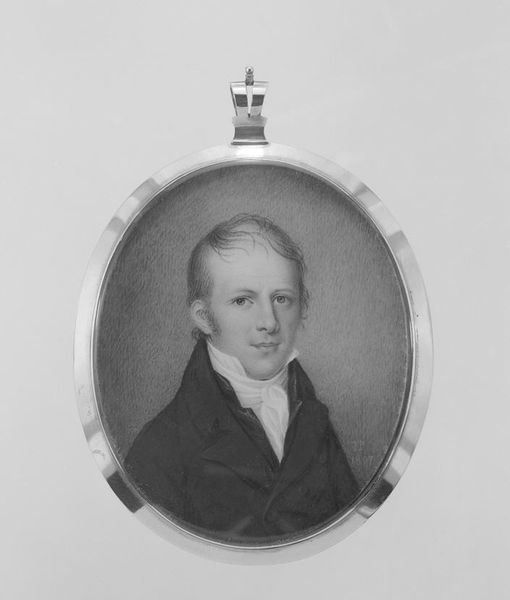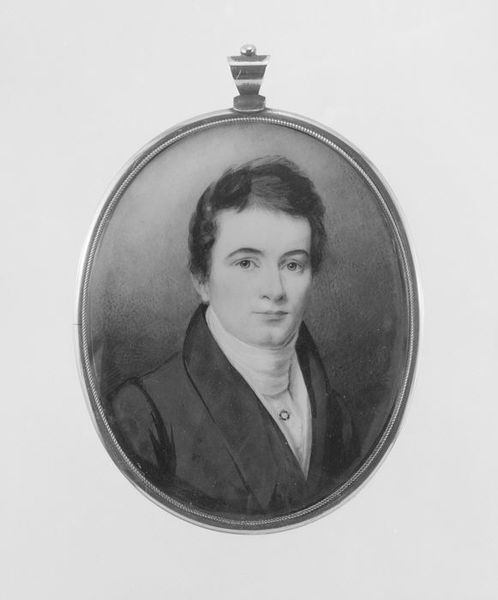
drawing, pencil, graphite
#
portrait
#
drawing
#
neoclacissism
#
pencil
#
graphite
#
academic-art
#
miniature
#
realism
Dimensions: 2 13/16 x 2 5/16 in. (7.2 x 5.9 cm)
Copyright: Public Domain
This small portrait of a gentleman was painted by William M. S. Doyle, likely in the early 1800s. It’s made with watercolor on ivory, a material prized for its smooth surface and luminous quality. Think about how the artist built up the image, layer by delicate layer. The fineness of the brushstrokes and the thinness of the paint allow light to penetrate the surface, giving the portrait a lifelike glow. Ivory was often used for miniature portraits like this, which were popular among the upper classes as keepsakes or mementos. The choice of ivory as a support also speaks to larger issues of trade and consumption in the 19th century. As a luxury material sourced from the tusks of elephants, ivory was both a symbol of wealth and a product of colonial exploitation. The artistry lies not just in the skill of the painter, but in the complex web of materials, labor, and social relations that shaped its creation. Ultimately, this work invites us to consider the intimate connection between art, materials, and the wider world.
Comments
No comments
Be the first to comment and join the conversation on the ultimate creative platform.
